World Cup: What happened to England's 1966 shirts?
- Published
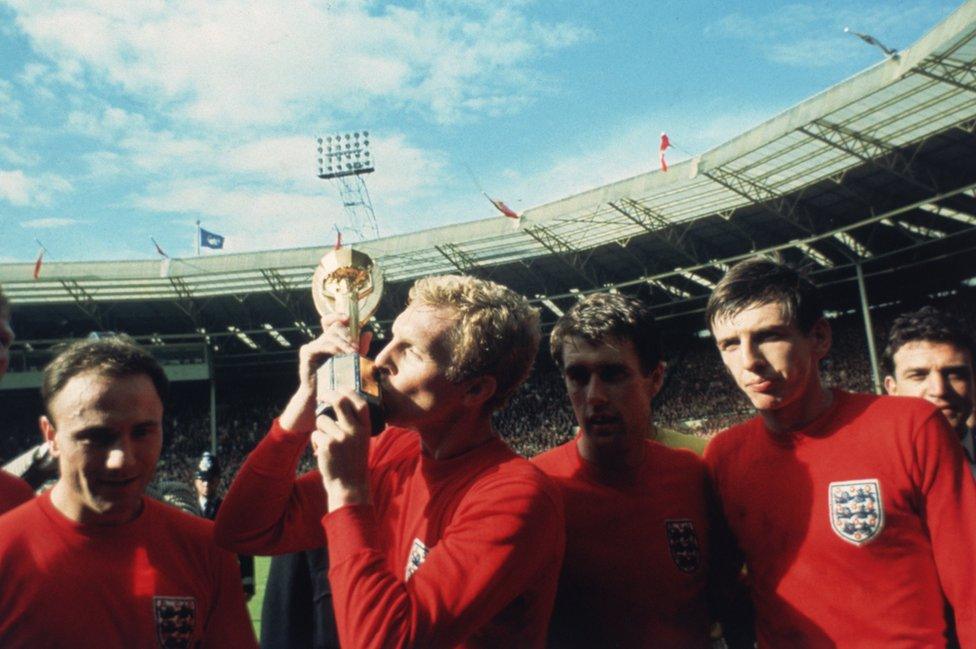
England's 1966 World Cup win remains their sole triumph on the greatest footballing stage. The enduring symbol of that victory has come to be the simple red shirts worn by those who made it on to manager Alf Ramsey's team sheet, but where are these "national treasures" now?
"Some people are on the pitch! They think it's all over! It is now!"
BBC commentator Kenneth Wolstenholme's words rang out on TV sets across the nation as Geoff Hurst fired the ball high into the West Germany net, ensuring England would lift the Jules Rimet Trophy.
The 11 men who took to the Wembley turf had secured the country's greatest sporting success, their names to be remembered by generations of football fans.
Adorned with only a crest and number - and, in somewhat of an irony, broadcast to 32.3 million people in black and white - the scarlet shirts are arguably the most recognisable symbol of that win and carry a cultural and monetary value belying the modesty of their design. Sadly, not all survive.

Before the final, England had worn red very few times with blue shirts the previous change colour until 1951
"Half the team swapped their shirts with the opposition and most of those have never been seen again," explains Jim Drewett, editorial director of Vision Sports Publishing, which has just released Three Lions on a Shirt: The Official History of the England Football Jersey.
"At the time players didn't consider the value they could have in the future. It was a completely different world.
"As time has gone on, they have become national treasures. [Midfielder] Martin Peters said swapping his shirt was the biggest regret of his life."
Goalkeeper Gordon Banks (who wore yellow) and defenders George Cohen and Ray Wilson also exchanged jerseys with West German players - as did forward Roger Hunt and midfielder Bobby Charlton.
Decades later, Drewett says, Charlton asked his counterpart Uwe Seeler if his shirt could be returned only to be told it had been thrown away.
His brother Jack, who died two years ago, is believed to have kept his, although his family were reluctant to discuss the matter when contacted by the BBC.
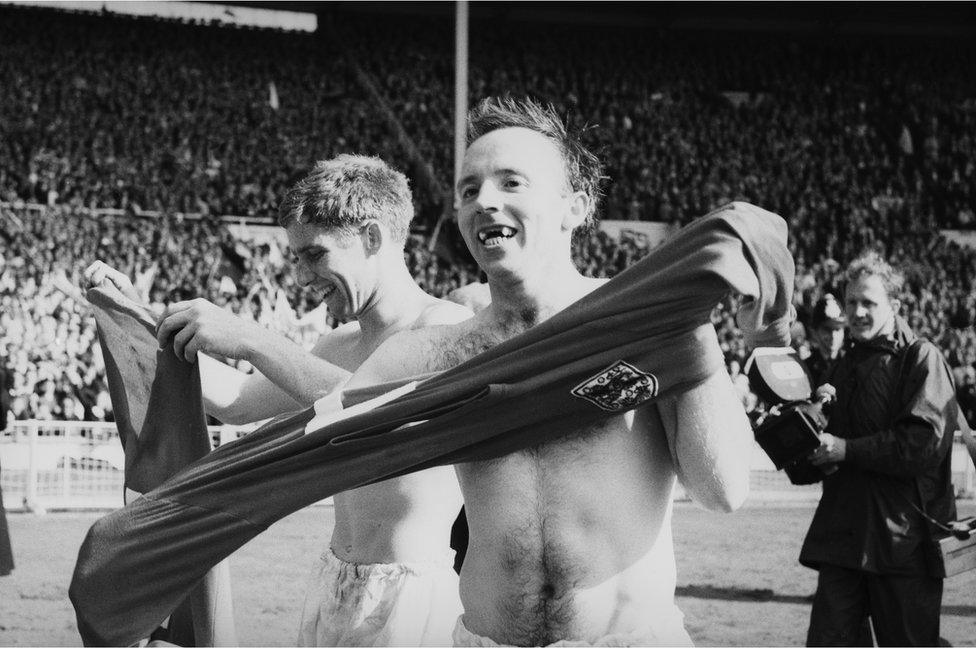
Alan Ball (left) and Nobby Stiles had agreed to swap shirts with each other regardless of the match's result
Another swap - this time between England team-mates - led to what may be the most unusual story associated with the team's historic attire.
When midfielders Alan Ball and Nobby Stiles exchanged jerseys during the lap of honour, no-one would have expected Stiles's shirt to make its way into the window display of a Bolton television shop.
Ball, the book's authors say, returned from holiday to find his mum had washed the keepsake.
When the next World Cup began in Mexico, in 1970, Ball's parents loaned it in return for a new TV set which allowed them to watch their son play in colour.
"That's my favourite story of all," says Drewett. "I'd love to find a photo of Nobby's shirt sitting in the shop window."
By 2010 it was no longer in the Ball family's possession and made its way to auction where it sold for £75,000.
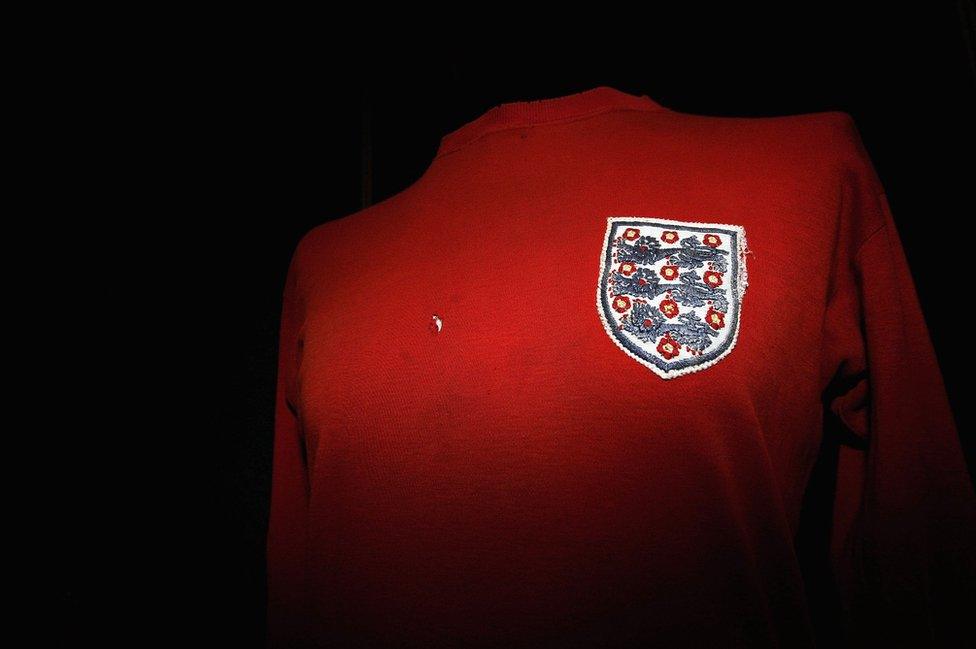
George Cohen's World Cup final shirt was auctioned by Christie's in 2006
The man who purchased it was Nigel Wray, former owner of Saracens Rugby Club. It was not his first '66 final shirt, though. Nor would it be his last.
In 2006, he had secured Cohen's jersey for £38,400 when it was auctioned by the family of the late German player Lothar Emmerich.
A decade later, he bought hat-trick hero Hurst's number 10 top via a private treaty when it failed to reach its £300,000 reserve at Sotheby's. The jersey had initially been sold by the striker in 2000 for a then-record £91,750.
Entrepreneur Wray believes he has "the three most-important" '66 final shirts.
"Well, I would say that, wouldn't I?" he chuckles. "Items become iconic over time when there is a story attached them. The story brings them to life.
"Geoff Hurst's shirt speaks for itself and Nobby Stiles's goes with his jersey from Manchester United's 1968 European Cup final victory when they became the first English side to win it.
"The Cohen shirt I find remarkable as I've also got his nephew Ben Cohen's from the 2003 rugby union World Cup final. Two Englishmen from the same family winning World Cups. Amazing. I don't believe it will be done again."
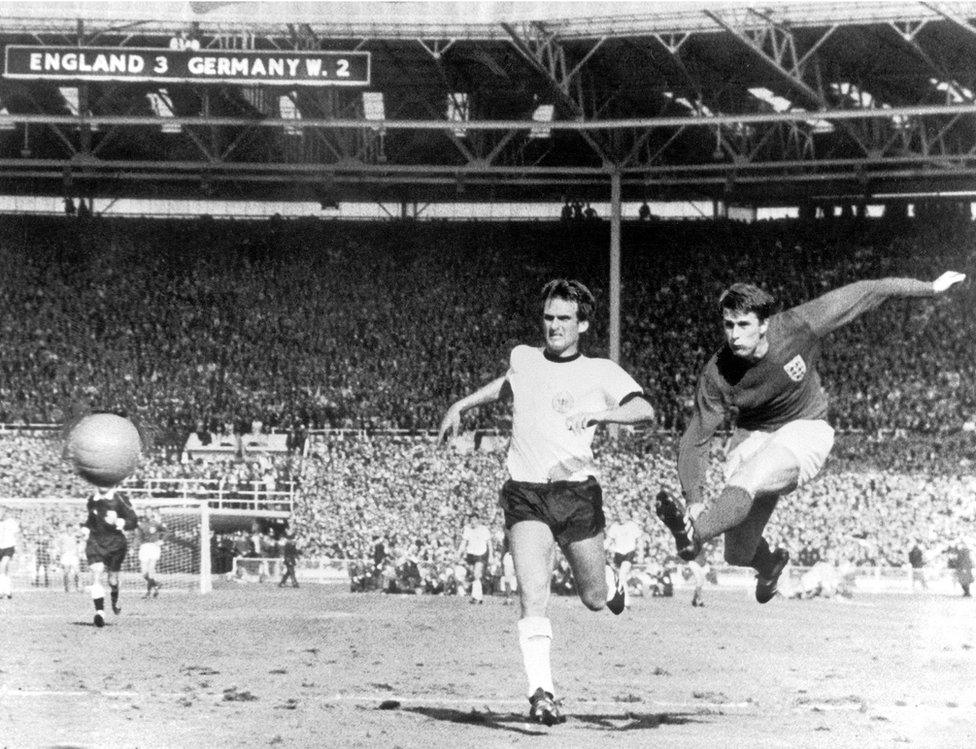
Geoff Hurst's third goal - and England's fourth - was immortalised by Kenneth Wolstenholme's commentary
The first '66 final match-worn shirt to go under the hammer had been Hunt's which, having been swapped with Wolfgang Weber, sold in 1999 for £17,250.
The most recent - Ball's - came just last week.
Having changed hands for £51,750 in 2010 when Stiles auctioned his memorabilia, it came on to the market once more and was purchased for £130,000 plus fees by an undisclosed buyer.
While acknowledging midfielder Ball was a great of the game, Wray did not bid: "How many '66 shirts do you need?!"
With so many of the surviving shirts no longer owned by the players who wore them, is there any sense they have missed out as prices in the memorabilia market boom - and should the Football Association not have tried to buy them?
An interview request sent to Sir Geoff Hurst's representatives went unanswered, while the FA declined to comment on whether it had any interest in doing so.
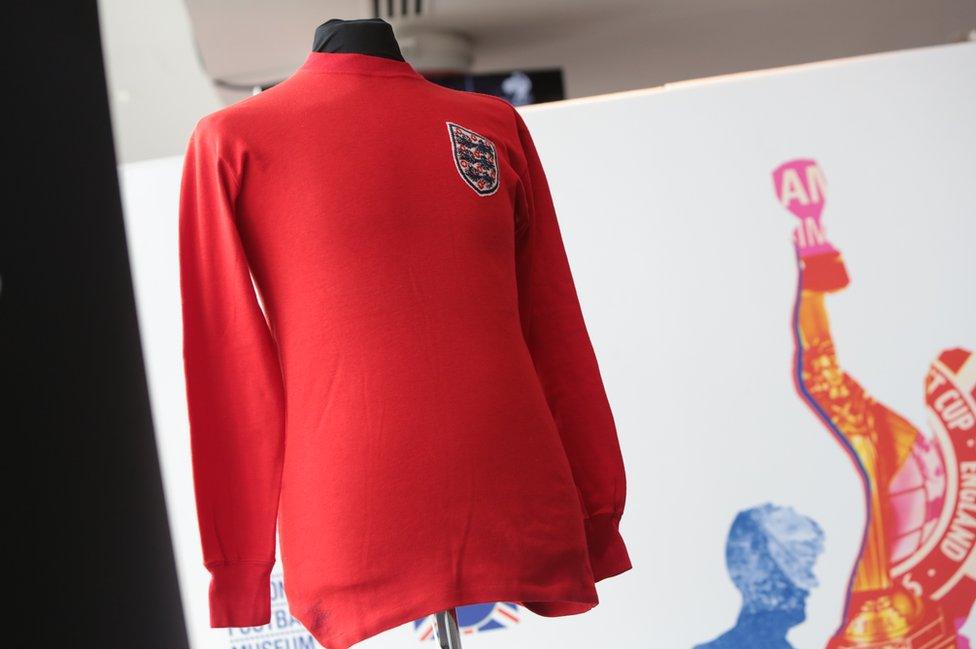
Sir Geoff Hurst's shirt failed to reach its reserve at auction in 2016, but its value is now likely to be much higher
For his part, Wray is adamant the shirts should not be hidden away. The trio in his possession form part of his staggering Priory Collection, which he describes as featuring "Britain's great sporting moments".
One of the largest hauls of its kind in the world, WG Grace's last cricket bat sits alongside Olympic torches from every games since 1936 and Henry Cooper's boxing gloves from when he floored Muhammad Ali with a thunderous left hook.
Cohen's jersey is displayed at Saracens' StoneX Stadium in west London along with that of his nephew, while Hurst's shirt is on loan to Manchester's National Football Museum.
"It would be completely pointless if I stuffed the whole lot in my cupboard," Wray says. "All the big stuff is out there [on show].
"You often hear 'what a shame these guys have to sell'. I suppose if you've got three children, like Nobby Stiles, then what do you do? You can't cut a shirt into three. It must be difficult for players."
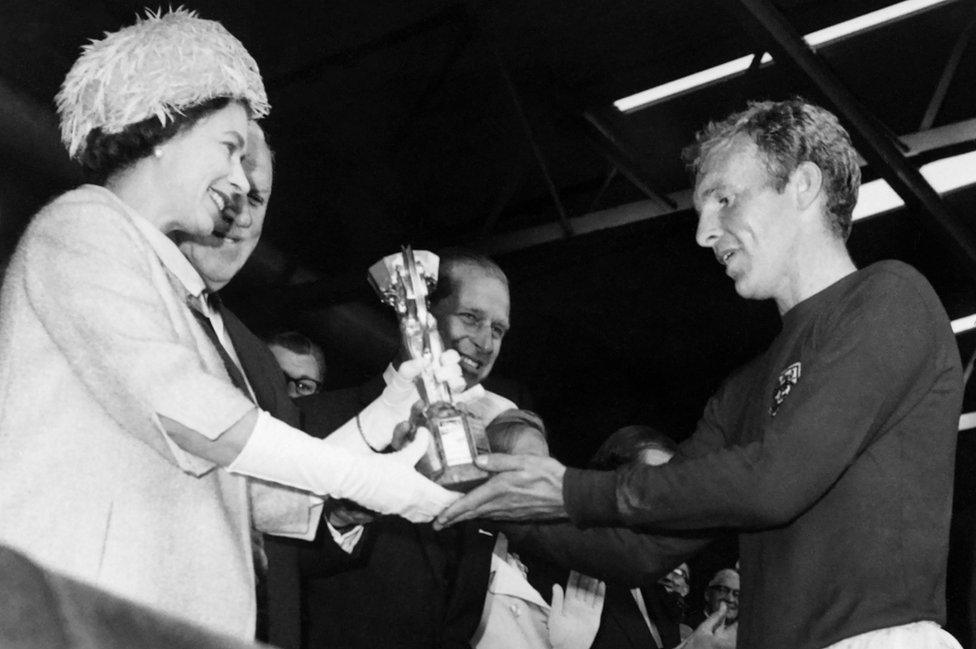
Queen Elizabeth II presented captain Bobby Moore with the Jules Rimet Trophy
Also proudly among his collection is the shirt Bobby Moore wore in 1970 as the defending champions took on Brazil in the scorching heat of Guadalajara.
After a performance often hailed as the greatest by any England player, the skipper famously embraced Pele as they swapped jerseys at full-time.
Now, tobacco-stained following decades apparently hanging in a Brazilian bar, it is on show at Saracens' ground.
Where, though, is the top the England captain wore at Wembley four years earlier?
Three Lions co-author Daren Burney, who counts more than 1,800 shirts in his personal collection including Martin Peters' spare from the final, describes it as a "mystery".
Moore's back-up was auctioned by the widow of team trainer Harold Shepherdson in 1999 for £44,000, but the fate of the match-worn shirt is unknown.
When the defender's widow, Tina, sold his collection of medals and trophies to his former club West Ham United in 2000, the 1966 final shirt was not among them.
"It's near impossible to put a value on what it would be worth," Burney says after a deep breath. "Him holding the trophy is probably the most iconic photograph in British sporting history.
"Bobby was considered to be a lovely, generous man. He would give everybody his kits or memorabilia, so there's every likelihood he could've passed it on to someone.
"Hopefully, it's still out there somewhere."
Related topics
- Attribution
- Published4 May 2022
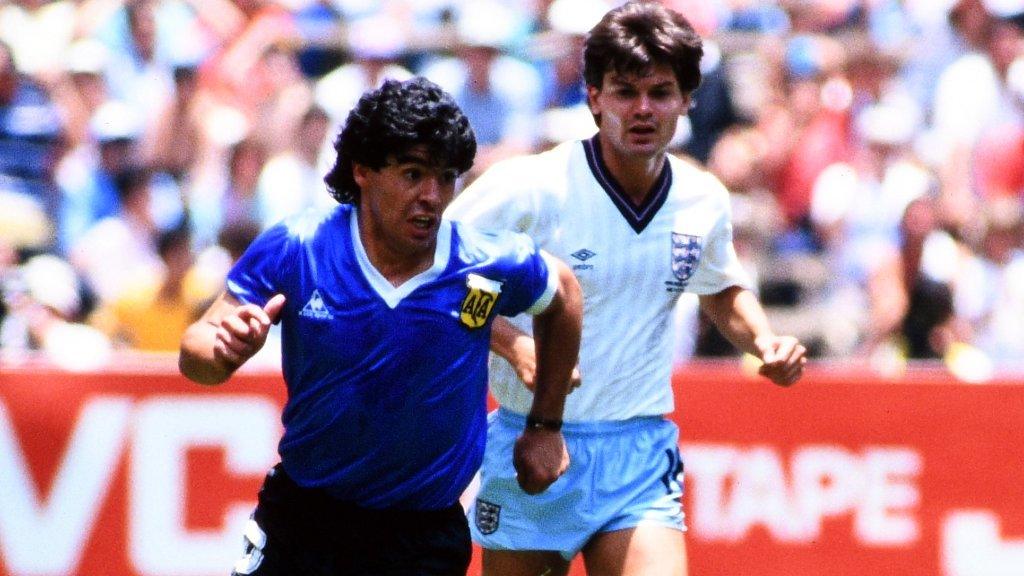
- Published13 May 2020
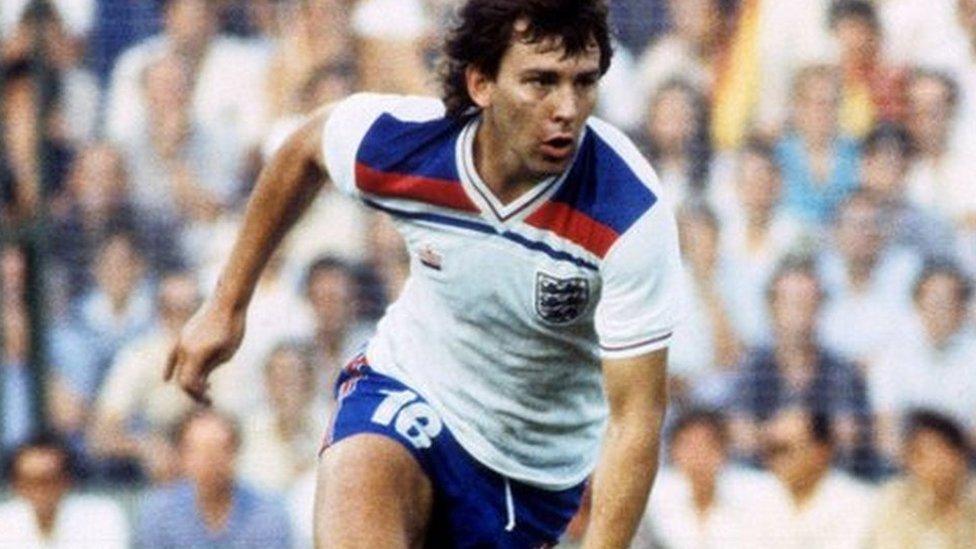
- Published3 June 2020
